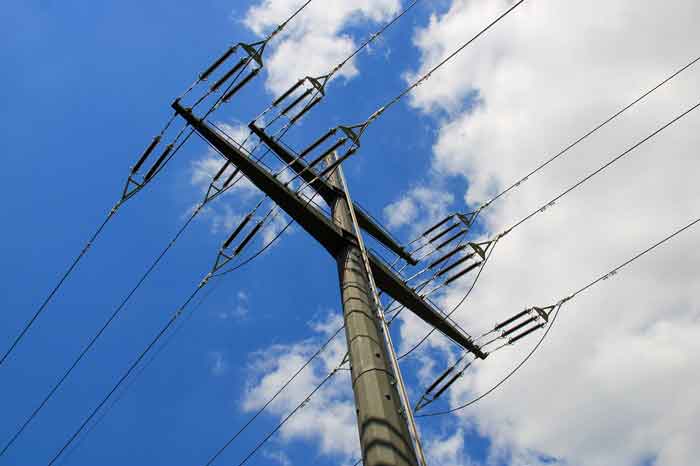New York State clamping down on energy providers
By Syracuse Post-Standard
CSA Z463 Electrical Maintenance
Our customized live online or in‑person group training can be delivered to your staff at your location.

- Live Online
- 6 hours Instructor-led
- Group Training Available
When the door-to-door salesman showed up at Frankel's house in October, he told her he could help reduce her utility bills, Frankel said. He offered her a fixed price on electricity and natural gas for five years.
"He said he could save me money," Frankel said.
Even his company name said it: U.S. Energy Savings.
Frankel signed the five-year contract. Then her bills quickly went up.
Her first bill with the new supplier was more than $70 higher than it would have been if she had bought her energy from National Grid. Her next bill, which arrived just a couple weeks ago, was more than $100 higher.
Alarmed, Frankel called U.S. Energy Savings and demanded to cancel her contract. They said her termination fee would be $324.
"I was stupid," said Frankel, 58, who teaches hearing-impaired pupils in the Syracuse school district. "I was naive and trusting."
Officials from U.S. Energy Savings deny misleading Frankel.
Gord Potter, senior vice president of the Toronto-based company, said not only did Frankel sign a clearly written contract, but she also received a follow-up phone call before service began. During the call, which was recorded, she affirmed that she knew the contract guaranteed price stability but not savings, Potter said.
Nevertheless, Potter said he would waive Frankel's termination fee "as a service gesture."
Energy deregulation has brought plenty of confusion to residential customers, many of whom struggle just to understand the complexities of their utility bill, much less the new alternatives offered by independent electricity and gas suppliers.
Unfortunately, many of those suppliers have done little to clarify matters, state officials say.
In an attempt to clamp down, the state Public Service Commission issued new, tougher rules in October that require independent energy marketers to provide written disclosures to customers and to meet certain training standards for their salespeople, among other provisions.
Meanwhile, the state attorney general's office has gone after at least four energy marketing firms after receiving complaints of deceptive sales tactics. Most recently, they went after U.S. Energy Savings.
In July, Attorney General Andrew Cuomo announced a settlement with U.S. Energy Savings to resolve a wave of complaints from customers in the Buffalo area. The company admitted no wrongdoing, but agreed to pay $100,000 in costs and to waive termination fees for customers who wanted to get out of their contracts.
As of October, the company had let more than 6,000 customers in New York state out of their contracts, waiving termination fees of more than $2.8 million, according to the attorney general's office.
U.S. Energy Savings' rapid growth in the United States has been accompanied by hundreds of consumer complaints.
The settlement with Cuomo came five months after the Illinois attorney general filed a lawsuit accusing U.S. Energy Savings of consumer fraud.
"U.S. Energy is purposely deceiving consumers," Attorney General Lisa Madigan said when the suit was filed last February. The suit, which demands restitution for customers, is pending.
In March 2008, the Citizens Utility Board, a non-profit consumer watchdog group in Illinois, petitioned state utility regulators to revoke U.S. Energy Savings' operating certificate until the company improves its marketing practices. That case is pending before the Illinois Commerce Commission.
Citizens Utility Board submitted a similar complaint in 2006 that resulted in a settlement with the company. U.S. Energy Savings agreed to waive termination fees and to provide refunds to customers who believed they were misled.
Since the 2006 settlement was implemented, CUB officials say they have received more than 1,500 new complaints.
Now the group wants the company barred from selling its products "until they clean up their act," said Jim Chilsen, speaking for Citizens Utility Board.
Potter, of U.S. Energy Savings, declined to comment on any pending litigation. But he said his company takes complaints seriously and has improved its sales practices in response to them.
"Over the years as you enter into each area, you adjust your marketing based on your feedback from your consumers," Potter said. "So if you see that there are concerns or complaints that you're receiving, then we take steps to try to mitigate that and resolve it."
U.S. Energy Savings is a subsidiary of Energy Savings Income Fund, a publicly held company based in Toronto, with shares that trade on the Toronto Stock Exchange.
The company started in 1997 selling natural gas in Canada, and entered the U.S. market in recent years in states where deregulation has taken hold. Besides selling throughout most of Canada, U.S. Energy Savings has operations in New York, Illinois, Indiana and Texas.
The company has nearly 1 million customers, Potter said.
Some 600 independent contractors sell U.S. Energy Savings' products door-to-door throughout North America. They are paid 100 percent on commissions — no sale, no money.
During the three months ending December 31, the company added 94,000 new customers. But it also lost 71,000 customers during the period, resulting in a net gain of 23,000.
The company foresees most of its future growth coming from U.S. markets, Ken Hartwick, chief executive officer, said during a conference call with stock analysts.
U.S. Energy Savings is currently advertising for 15 independent sales representatives in Syracuse.
In New York, the company sells both electricity and gas. It offers only long-term contracts — four or five years — at fixed prices.
To guarantee fixed prices, the company usually must charge more than what the utility is charging at the time, Potter said.
"In most cases, we're in a position where customers are paying a premium at the time over the current utility rate," he said.
Frankel's contract fixed her natural gas price at $1.37 per therm, more than 40 percent higher than the 93 cents National Grid charges this month. Her price included an 8-cent premium to buy "carbon offsets" to reduce greenhouse gas emissions.
National Grid's gas supply price fluctuates each month, but has exceeded $1.37 only once, in July 2008, when it spiked to $1.53.
Frankel's electricity price was set at 13.28 cents per kilowatt-hour, compared with National Grid prices that typically range between 8 and 9 cents. Her price included a 0.8-cent premium for renewable energy.
Why would a customer accept those higher prices?
Although energy prices swing up and down, the general trend in recent years has been steadily upward, Potter said. A fixed, long-term price provides insurance against rising costs.
Nearly 90 percent of U.S. Energy customers who have completed a five-year contract have saved money, Potter said.
Indeed, data compiled by the Citizens Utility Board show that some Illinois customers who signed contracts with U.S. Energy Savings in 2004 saved money compared with utility rates. But the CUB data also show that every U.S. Energy contract signed since 2005 has been a loser for the consumer.
Overall, 98 percent of Illinois consumers who have signed up with U.S. Energy Savings have lost money, with an average loss of $780 to date, CUB concludes.
Potter declined to comment on the CUB data. But he said his company's service emphasizes price stability, not savings.
"It's not sold on savings, because I can't guarantee what's going to happen tomorrow," he said.











